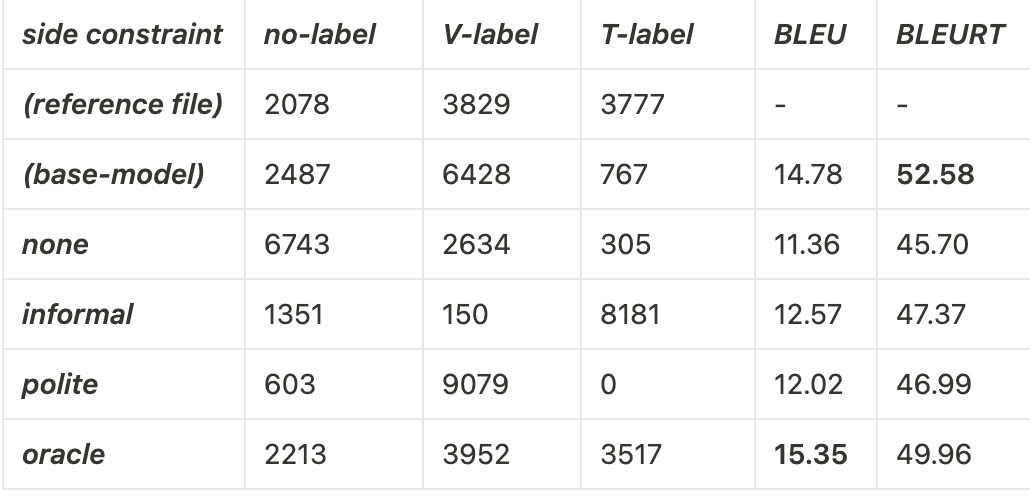This project is aiming to implement honorifics (T/V) distinction for translating English to Russian.
It is inspired by an article 'Controlling Politeness in Neural Machine Translation via Side Constraints'.
This README provides a short overview of the project, for a lengthy one, please, read this report.
The repo consists of
-
token-based (
code/tv_detector/) and grammar-based (code/conll_tv_detector/) T/V detectors -
neural-based translation, evaluation (BLEURT) and morphosyntactic parsing (DeepPavlov) models in Jupiter Notebook format (under
code/notebooks/). Those models are intended to use via 'Google Collaboratory'. -
data processing utilities (
code/helper.py) and some examples (code/main.py) -
train and test corpora (under
data/) -
predicted translations (under
translations/)
Data for training a neural model is taken from the Yandex 1m EN-RU corpus. Dataset was sampled to select 22k V-sentences, 8k T-sentences and 100k neutral sentences.
Test dataset was crafted from manually annotated sources for solving the deixis problem (Voita et. al, 2019).
The model was developed with the JoeyNMT as a base translation framework.
Main notebooks for model training and demonstration are
code/notebooks/train_TV_model.ipynb
and code/notebooks/demo_TV_model.ipynb
Trained checkpoints and some data files for demo are available on Google Drive (TV_model, base_model).
To sum up, you can see that a simple technique such as prepending T/V tokens to source sentences can add controllability to NMT.
Author: Tsimafei Prakapenka

